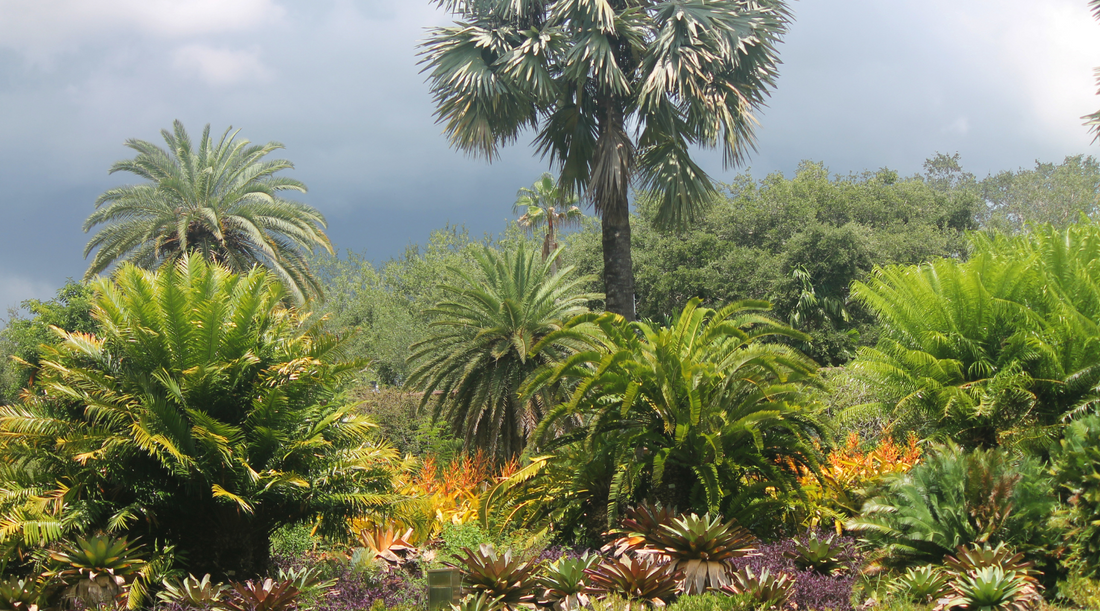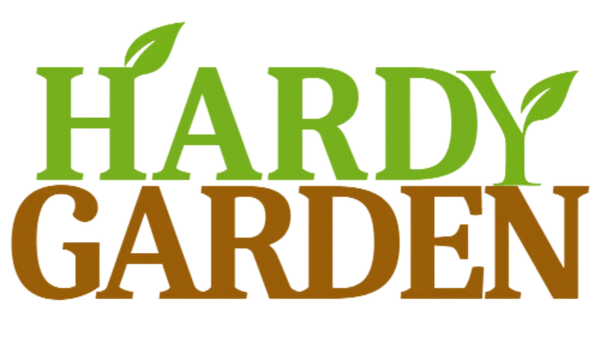
Why Planting and Gardening Native Plants in Florida Matters
Welcome to Florida, home to dynamic ecosystems, beautiful beaches, and the occasional hurricane. But have you ever stopped to consider the greenery that surrounds you? It's not just there to make the state look nice; it also helps balance Florida's unique environment. However, not all plants fulfill the same function. Enter native plants, the unsung heroes who do more than just draw your attention.
These native flora are critical to the ecosystem and economy and fight against natural disasters. Continue reading to learn why planting and caring for them should be everyone's concern.
The Importance of Native Plants
Why does planting native plants matter? Native plants are tailored to their local environment, contributing to the health and balance of local ecosystems. But the benefits don't stop there.
A Natural Fit
Over thousands of years, native plants have adapted to a particular area's soil, climate, and animals. In Florida, they're the real MVPs for supporting local ecosystems. They require less water and fewer pesticides, making them an eco-friendly option for your garden. Imagine having a garden that's not just a visual treat but also a guardian of the local ecology. Sounds great, doesn't it?
Supporting Wildlife
One of the incredible things about native plants is their role in supporting local wildlife. They act as a grocery store for pollinators, offering nectar and pollen. Your garden could become a haven for bees, birds, and butterflies, contributing to biodiversity. It's like inviting nature to your backyard.
The Climate Champions
Did you know that native plants are also climate action heroes? Their deep root systems are excellent at storing carbon, making them a natural ally in the fight against climate change. Additionally, their resilience to local weather conditions means they can help the land recover from natural calamities.
Resilience in Times of Disaster
Florida faces its share of natural calamities like hurricanes and floods. Native plants are adept at retaining soil, reducing erosion risk during heavy rainfall. Plants like the Saw Palmetto or the Slash Pine have root systems that hold the soil together, acting as natural fortifications.
Economic Benefits
Let's not forget the pocket-friendly aspect of native plants. They require less maintenance, which means fewer trips to the garden store for fertilizers or insecticides. Your wallet will be as happy as your garden!
The Role of Native Plants in Natural Calamities
Rooting Against Erosion
Soil erosion is often a precursor to other natural disasters like landslides and flooding. Native plants like Muhly Grass and Sea Oats have deep and complex root systems that help hold the soil together. It's like having a natural underground net that prevents the earth from crumbling away, effectively combating erosion.
Natural Flood Barriers
When it rains, it pours—especially in Florida, where torrential downpours are commonplace. But did you know plants like the Bald Cypress and Pickerelweed can act as natural sponges? Their root systems absorb and hold vast amounts of water, preventing it from flooding nearby areas. Just imagine them as nature’s little dam engineers, helping to regulate water flow during storms.
The Windbreakers
Florida is no stranger to hurricanes, and the devastation they bring is well-known. Native trees such as the Southern Live Oak and the Sabal Palm are naturally more resilient to high winds than non-native species. By acting as windbreakers, these trees can reduce the wind speed and potentially minimize damage to structures and soil. Essentially, these trees are the stoic sentinels standing guard against the storm.
Drought Resistance
While not strictly a 'calamity' in the same vein as hurricanes or floods, drought conditions can severely impact the land and its ability to recover from other natural disasters. Native plants are generally more drought-resistant, requiring less water to survive. This trait makes them invaluable during prolonged periods of dryness, serving as living reservoirs that sustain the surrounding environment.
Coastal Defense
Coastal erosion is a growing concern with rising sea levels. Native plants like Mangroves and Sea Grapes are pivotal in stabilizing coastlines. Their extensive root systems hold the soil together and provide a habitat for numerous marine species, creating a buffer against storm surges and high waves.
Must-Have Native Plants in Florida
Trees
Southern Live Oak
-
Benefits: Live Oak trees are crucial for wildlife, offering both food from their acorns and shelter within their extensive branches.
-
Uses: These majestic trees are often used as standalone features in landscapes, providing both shade and a sense of grandeur.
-
Resilience: Known for their exceptional wind resistance and long lifespans, Live Oaks are virtually synonymous with resilience.
Bald Cypress
- Benefits: Exceptional at absorbing water, thus reducing flooding.
- Uses: Ornamental or for timber.
- Resilience: Tolerant of wet conditions and relatively wind-resistant.
Shrubs
Wax Myrtle
- Benefits: Attracts wildlife and is salt-tolerant.
- Uses: Ornamental or for screening.
- Resilience: Drought-tolerant and able to withstand occasional flooding.
Beautyberry
-
Benefits: The vibrant purple berries of the Beautyberry shrub are a food source for birds and other wildlife, thus promoting local biodiversity.
-
Uses: This shrub serves as an excellent focal point in a garden setting, especially during the fall when its berries are in full display.
-
Resilience: Beautyberry is relatively resistant to pests and diseases and can withstand various soil types, making it a hardy addition to your landscape.
Grasses
Muhly Grass
-
Benefits: Muhly Grass is excellent for soil stabilization, thus helping in erosion control. It also serves as a habitat for local fauna.
-
Uses: This ornamental grass adds a feathery, textured look to landscapes and can be used in mass plantings for a dramatic effect.
-
Resilience: Muhly Grass is drought-tolerant and can survive in poor, sandy soils, making it a robust and versatile option for your garden.
Sea Oats
- Benefits: Exceptional at stabilizing sand dunes.
- Uses: Coastal restoration.
- Resilience: Tolerant of salty conditions and wind.
Fruits
Saw Palmetto Berries
- Benefits: Provides food for wildlife.
- Uses: Berries harvested for medicinal purposes.
- Resilience: Very hardy, drought-resistant, and tolerates poor soil.
Vegetables
Wild Garlic
- Benefits: Attracts pollinators.
- Uses: Culinary uses, similar to domesticated garlic.
- Resilience: Pest-resistant and tolerates a variety of soil conditions.
Flowers
Coreopsis
-
Benefits: Coreopsis is not just a pretty face; it's an eco-warrior. This perennial wildflower attracts pollinators like bees and butterflies, helping with plant reproduction and biodiversity.
-
Uses: Perfect for borders, meadows, and even as cut flowers, Coreopsis adds a splash of color with its bright yellow or pink blooms.
-
Resilience: Being drought-tolerant and requiring minimal care, Coreopsis is also resilient to pests and diseases, making it a hardy choice for any garden.
Gaillardia
- Benefits: Attracts pollinators.
- Uses: Ornamental.
- Resilience: Drought and salt-tolerant.
Ornamentals
Caladium
- Benefits: Adds vibrant color to shady areas.
- Uses: Ornamental, mainly in pots or as border plants.
- Resilience: Prefers the humid conditions native to Florida.
Sabal Palm
- Benefits: An emblematic symbol of Florida, the Sabal Palm offers shade and serves as a habitat for various wildlife species.
-
Uses: Often used as a decorative piece in landscapes, the Sabal Palm also provides materials like palm fronds for crafts.
-
Resilience: Known for its strong root system, this palm can withstand hurricane-force winds, making it a must-have if you're concerned about natural calamities.
Conclusion
In conclusion, to make a positive impact on your local environment while also sprucing up your own backyard, go native! Planting native plants in your Florida garden is a win-win situation. Not only do you get to enjoy a beautiful, low-maintenance landscape, but you're also doing your part to protect the local ecosystem and help your community withstand natural disasters.
So why not leap? Your garden, your wallet, and your local wildlife will thank you. After all, what's better than creating a small sanctuary that's also a superhero in disguise, doing its part to save the planet? Happy planting!
FAQs
What are some easy-to-maintain native plants for beginners? Consider starting with Coreopsis or Beautyberry.
Do native plants attract pests? Generally, native plants are more resilient to local pests.
Can I plant non-native plants alongside native plants? While possible, be cautious as non-native plants can sometimes outcompete or harm native species.
Where can I buy native plants in Florida? Many local nurseries and garden centers offer native plants.
How do native plants help in the event of a hurricane? Their deep-root systems help control erosion, and some species are exceptionally wind-resistant, offering natural protection.
